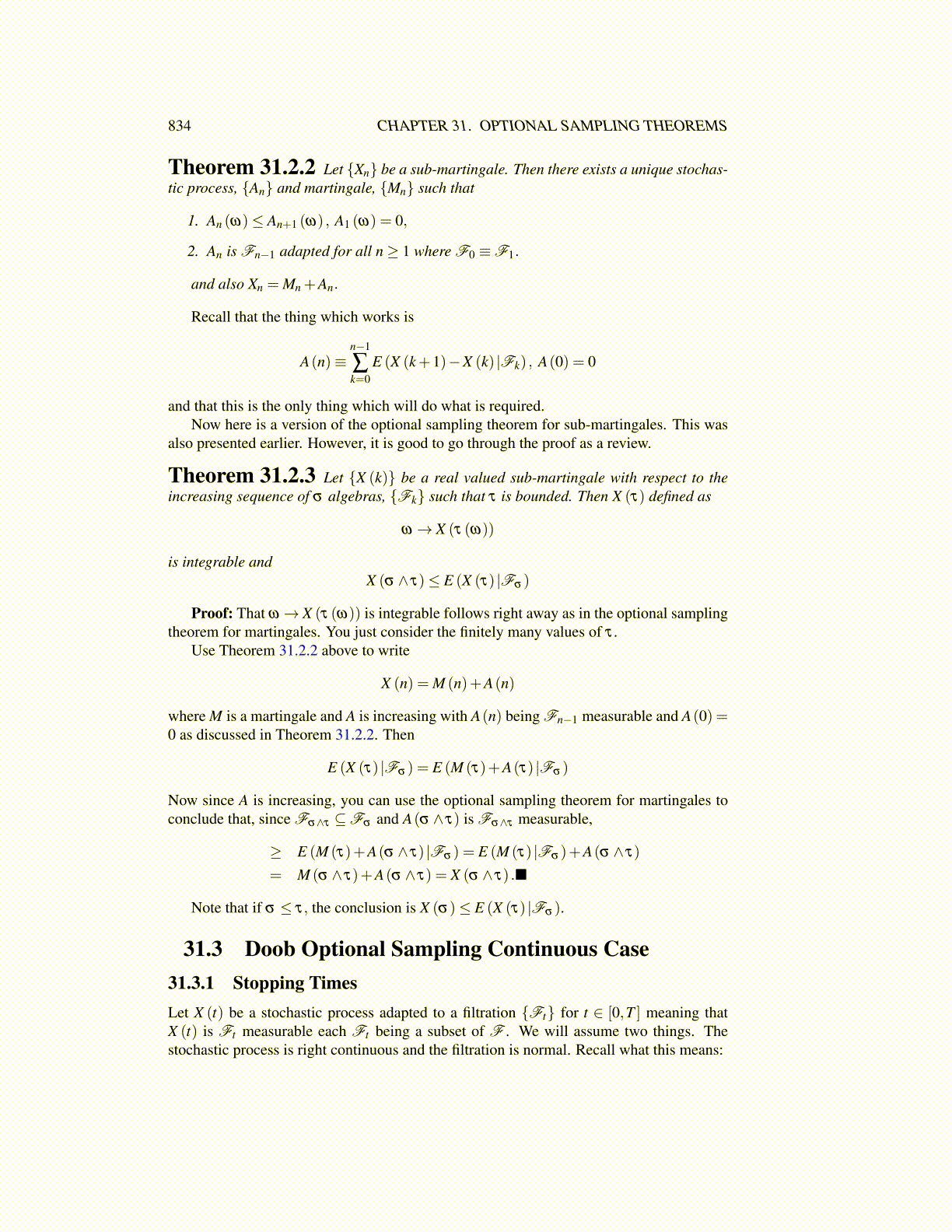
834 CHAPTER 31. OPTIONAL SAMPLING THEOREMS
Theorem 31.2.2 Let {Xn} be a sub-martingale. Then there exists a unique stochas-tic process, {An} and martingale, {Mn} such that
1. An (ω)≤ An+1 (ω) , A1 (ω) = 0,
2. An is Fn−1 adapted for all n≥ 1 where F0 ≡F1.
and also Xn = Mn +An.
Recall that the thing which works is
A(n)≡n−1
∑k=0
E (X (k+1)−X (k) |Fk) , A(0) = 0
and that this is the only thing which will do what is required.Now here is a version of the optional sampling theorem for sub-martingales. This was
also presented earlier. However, it is good to go through the proof as a review.
Theorem 31.2.3 Let {X (k)} be a real valued sub-martingale with respect to theincreasing sequence of σ algebras, {Fk} such that τ is bounded. Then X (τ) defined as
ω → X (τ (ω))
is integrable andX (σ ∧ τ)≤ E (X (τ) |Fσ )
Proof: That ω→ X (τ (ω)) is integrable follows right away as in the optional samplingtheorem for martingales. You just consider the finitely many values of τ .
Use Theorem 31.2.2 above to write
X (n) = M (n)+A(n)
where M is a martingale and A is increasing with A(n) being Fn−1 measurable and A(0) =0 as discussed in Theorem 31.2.2. Then
E (X (τ) |Fσ ) = E (M (τ)+A(τ) |Fσ )
Now since A is increasing, you can use the optional sampling theorem for martingales toconclude that, since Fσ∧τ ⊆Fσ and A(σ ∧ τ) is Fσ∧τ measurable,
≥ E (M (τ)+A(σ ∧ τ) |Fσ ) = E (M (τ) |Fσ )+A(σ ∧ τ)
= M (σ ∧ τ)+A(σ ∧ τ) = X (σ ∧ τ) .■
Note that if σ ≤ τ, the conclusion is X (σ)≤ E (X (τ) |Fσ ).
31.3 Doob Optional Sampling Continuous Case31.3.1 Stopping TimesLet X (t) be a stochastic process adapted to a filtration {Ft} for t ∈ [0,T ] meaning thatX (t) is Ft measurable each Ft being a subset of F . We will assume two things. Thestochastic process is right continuous and the filtration is normal. Recall what this means: